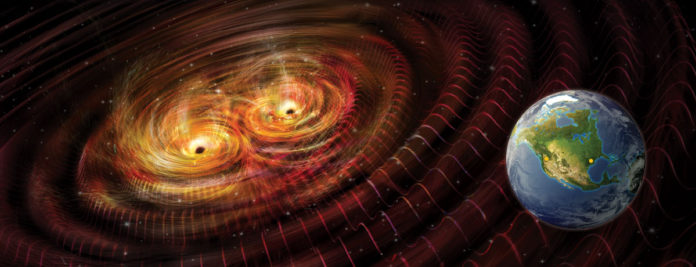The merging of two black holes was observed by three detectors on August 14, 2017, and is the first time ever this has happened. LIGO detectors previously detected gravitational waves back in 2015 and earlier on this year, but is the first time for Virgo, and the first time the waves have been observed by three detectors simultaneously.
Pairs of black holes are more common than we first thought, and this new event confirms it. These two, in particular, had masses 25 and 31 times that of the Sun, which when merged had a combined solar mass of 53. The other three solar masses were converted into gravitational waves. The spectacular event took place around 1.8 billion light years from Earth, so this is how far the gravitational waves would have had to travel before being detected first by the Advanced LIGO detector in Louisiana (USA), followed by a second detection by the second LIGO detector in Washington State (USA), and then finally the third detection was picked up by the Advanced Virgo detector near Pisa (Italy).
It’s because of the Advanced Virgo instrument that scientists have been able to improve the localization of these astrophysical events that produce the gravitational waves. With only two detectors in operation, the amount of sky to cover between them is quite large. Adding a third into the mix makes the area they have to scan about ten times smaller. In this particular, even the scientists established that the region of sky where the source was located was around 60 square degrees big and was searched by 25 different groups of astronomers.
The Virgo detector has another great feature, and that’s its orientation. Differing from that of the two LIGO detectors, the Virgo detector’s orientation allows testing of Einstein’s general theory of relativity. Further announcements are expected once the first set of data captured by the three-detector network has been analyzed.
More News to Read

